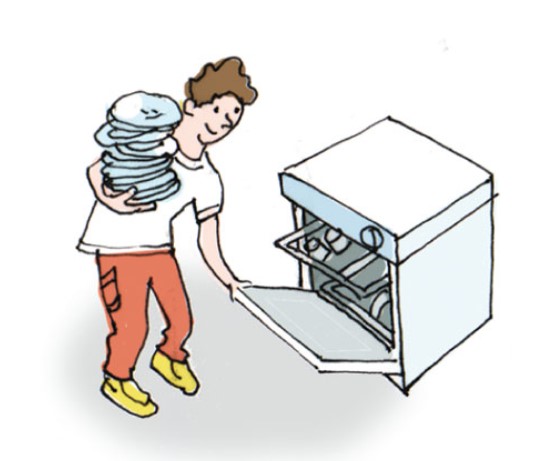6 Dishwasher Do's and Don'ts

Fork tines up or down? Plates facing right or left? Two pros cycle through their dish-loading directives.
Do: Make a Game Plan
"You'll use the space best if you first scan the kitchen and form a loading strategy," says Jill Notini, spokesperson for the Association of Home Appliance Manufacturers.
Put in big pieces first: It's more efficient to start with those, then fill in with the smaller ones.
Don't: Face Plates All in the Same Direction
"Place them on the bottom rack facing inward toward the spray arms, with smaller plates in front of large ones, so the spray can reach all of them," says Douglas Mott, president of RepairClinic.com.
Do: Organize Utensils
Sorting by type is a time saver for unloading. Put forks with forks and knives with knives, with handles facing up to avoid getting poked or punctured when you take them out. Spoons will stay dirty if they're "spooning," so insert some with handles facing down (or separate them in a slotted holder).
Don't: Rinse Plates. (Scraping Is Better)
Prerinsing wastes water and isn't necessary if you run the machine within a day. And today's machines can handle food residue, says Notini. One exception is rice: "It's worth rinsing off every grain, because rice can clog the drain hose," says Mott.
Do: Run the Dishwasher at Night
"Many utility companies charge more at peak usage times," says Mott. "Night is a less demanding time, so this can lower your bills."
Don't: Unload From Top to Bottom
"A piece on the upper rack may have a pool of water," says Mott. "If you unload the top rack first, the water can spill onto dry dishes below. "
Source: Stephanie Sisco and Virginia Sole-Smith - realsimple.com
